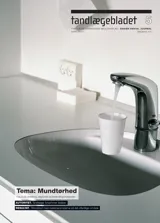Udredning af xerostomi og nedsat spytsekretion
Xerostomi er ofte associeret til betydelig nedsat spytsekretion, men kan forekomme, uden at der objektivt kan påvises nedsat spytsekretion. Udredning af patienter, som klager over mundtørhed, bør således altid inkludere en omhyggelig anamnese, en detaljeret klinisk undersøgelse samt måling af såvel den ustimulerede som stimulerede spytsekretion for at kunne identificere potentielle årsager til den nedsatte spytsekretion og xerostomi. I tilfælde af længerevarende nedsat spytsekretion vil den kliniske undersøgelse ofte vise udtalt tørhed af mundslimhinderne, talrige carieslæsioner og oral candidose. Der kan være behov for yderligere udredning omfattende billeddiagnostiske undersøgelser, spytkirtelbiopsi og blodprøver. Den diagnostiske proces stiller ofte krav om tværfagligt samarbejde. Tidlig og korrekt diagnose er selvsagt væsentlig for at kunne iværksætte adækvate behandlingsstrategier for den patient, som lider af xerostomi og nedsat spytsekretion.
Diagnostics of xerostomia and reduced salivary secretion
Xerostomia is often associated with salivary gland hypofunction but may occur without objective evidence of salivary gland hypofunction. Therefore, diagnosis of a patient who complains of xerostomia should always include a thorough patient history, a detailed clinical examination as well as measurement of the unstimulated and stimulated whole salivary flow rates in order to identify the potential causes for salivary gland hypofunction and xerostomia. In cases of persistent salivary gland hypofunction, the clinical examination may reveal obvious dryness of the oral mucosa, extensive caries lesions and oral candidiasis. Further diagnosis may include various imaging techniques, salivary gland biopsies and blood tests. The diagnostic process often requires an interdisciplinary approach. Naturally, an early and correct diagnosis is essential in order to initiate adequate management strategies for the patient suffering from xerostomia and salivary gland hypofunction.


